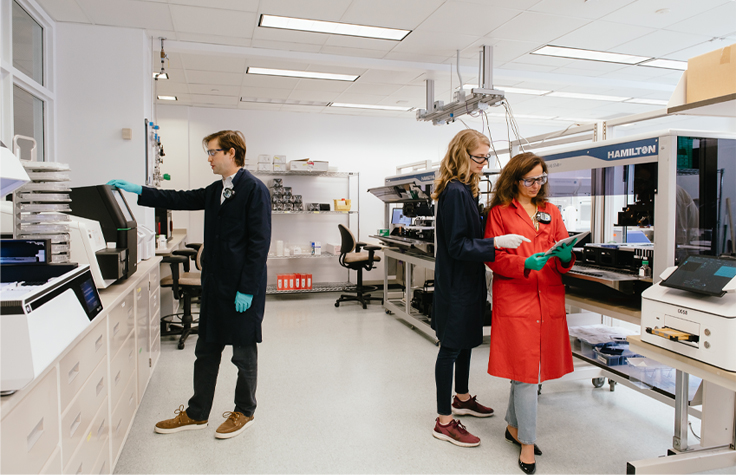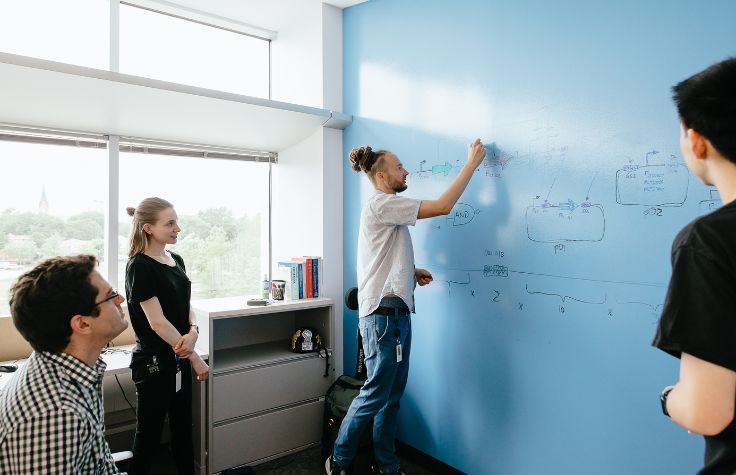
December 8, 2022
Emissions from industrial plants worldwide have been driving global warming for decades. Waste and gases from facilities like steel mills are rich in carbon and constitute about 21% of humanity’s carbon footprint. Biologists Sean Simpson and the late Richard Foster had an idea in 2005: Instead of causing harm, could these emissions be used for good?
That question led them to found LanzaTech, a biotechnology company based in Illinois, with the goal of turning carbon emissions into valuable material commodities.
Bacteria make that goal possible. Primitive microbes, or those found in extreme environments such as hydrothermal vents in the deep sea, have been converting carbon monoxide (CO) and carbon dioxide (CO2) into fuel for billions of years. Simpson and Foster first took a collection of microbes that were known to do this and began feeding them gases from a steel mill. In that initial screening and discovery stage, they found that an anaerobic bacterium called Clostridium autoethanogenum possessed an ancient pathway that could ferment both CO and CO2, effectively converting it into ethanol under the right conditions. Ethanol, in turn, can be made into polyester fabrics, aviation fuel, and—of course—alcohol.
To efficiently feed these gases to the microbes, LanzaTech developed and scaled novel bioreactors—large vessels where bacteria, liquid media, and gases are mixed and come together so the bacteria can consume the carbon in the gases, grow, and make products. They also developed a synthetic biology toolbox, including automated workflows and CRISPR gene editing tools, to improve the efficiency of the process and expand the range of products these microbes can make. Early in the company’s development, they invested in the Illumina MiSeq and later the NextSeq 1000, which have been instrumental in helping the company track genome edits in their strains and identify genes in plants, bacteria, and other life-forms that can convert carbon into useful chemicals—genes that could be introduced into C. autoethanogenum, says Michael Köpke, the company’s vice president of synthetic biology.

Illumina’s technologies helped LanzaTech to genetically modify C. autoethanogenum to synthesize acetone—an important solvent and chemical building block—from industrial emissions. Today, acetone is made exclusively petrochemically from fresh fossil fuels, but in the early 1900s it was produced by fermentation from sugars into a mixture of acetone, butanol, and ethanol. Due to substrate cost and low selectivity, the process was eventually abandoned over the course of the last century, but the strains were preserved and LanzaTech used that collection as a starting point.
“The initial hope was that some of these strains would also be able to utilize the gases we work with,” Köpke says. “Unfortunately, that was not the case and the collection of microbes was sitting in the corner for several years. Advancements in next-generation sequencing technology allowed us to revisit the collection.” Illumina’s sequencing technology helped LanzaTech identify the microbial genes responsible for making acetone, and with those sequences in hand, their researchers synthesized and transferred them into their organism. Acetone is used as a solvent for cosmetics, paints, electronics, and consumer products, and can be used in manufacturing acrylic glass—in which case, the formerly atmospheric carbon is locked away practically forever in a stable, solid form. “You can achieve not only carbon neutrality, but actual carbon-negative production,” says Köpke.
Currently, LanzaTech has three operational commercial units in China (which started up in 2018, 2021, and 2022), and two more coming online soon in India and Belgium. Since they came online, the facilities in China have produced over 50 million gallons of ethanol from industrial emissions, which is the equivalent of keeping over 200,000 tons of carbon from entering the atmosphere.
The company has 12 more units planned, which together would prevent 1 million tons of CO2 from being released and expand their production capacity to around 700,000 tons of useful chemicals each year. And it’s no longer just ethanol and acetone: LanzaTech has demonstrated the ability to convert industrial waste into over 100 different chemicals. “We’re working on optimizing the efficiency for those and then bringing them to scale into markets over the next couple of years,” Köpke says.
The resulting chemicals have a range of applications across industries; for instance, the ethanol LanzaTech produces has been used to make polyester for fashion brands Zara and Lululemon, and packaging for L’Oréal.
“It’s really exciting to see the impact we’re already having,” Köpke says. “Eventually [we] want to give every consumer an opportunity to get a sustainable version of everything that you find today.”


